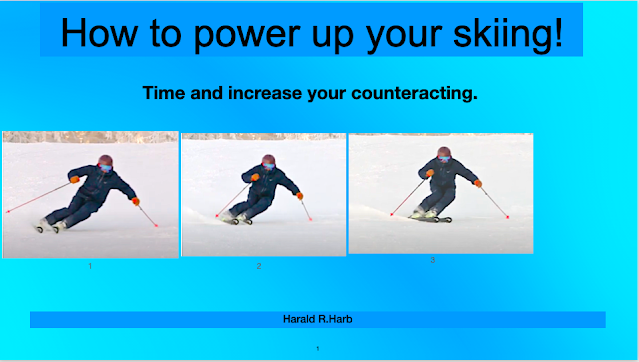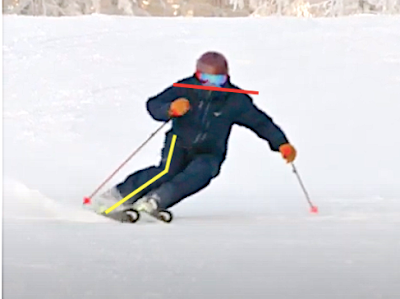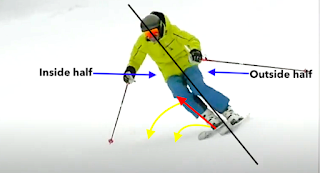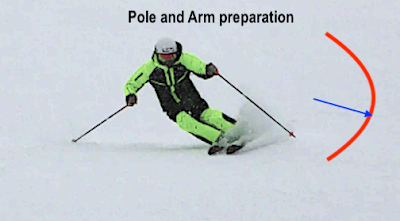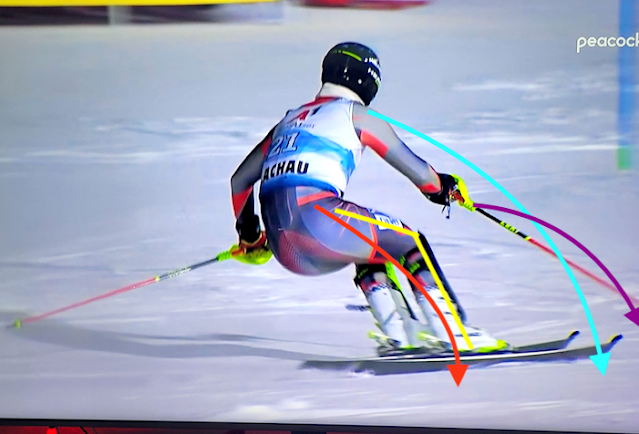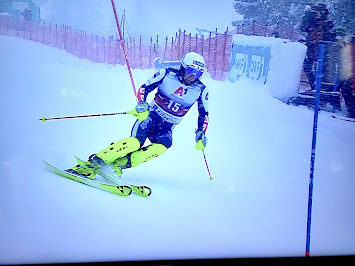In this series of photos and with the text added, I explain the development of high-energy turns used by the world's best skiers. As with all PMTS skiing, the angles are developed through relaxation and inside foot, leg, tipping, and inside leg shortening, or bending.
In my Books and Videos "Anyone Can Be an Expert Skier 2 and "The Essentials of Skiing"; I explain in detail how this changes your skill levels and ability to ski all turns and terrain. The PMTS teaching System was developed well before either Richi, or Marcel Hirscher were known to me, however, they both ski perfect PMTS technique. My books were published before I knew Richi Berger or before Marcel Hirscher won his first World Cup race. Every movement and body change shown here is exactly as I have explained in my books, although my books and videos go into much more detail for learning these exact skiing traits.
With the energy stored in the ski and the potential rebound developed from the previous turn this amount of inclination is possible as long as you have the skills to stay balanced, which are described in the next frames. If your release timing is too late or your outside ski balance and angles aren't creating enough hold and carve, start your counterbalance earlier in the turn.
Here you can see how all great skiers increase counteracting and counterbalance as the turn comes to the finish. All world cup slalom racers show the same movments.The blue arrow demonstrates he has increased his upper body and hip counteracting. Notice that the pole tip has moved forward, his shoulders have leveled with his increase in Counteracting and Counterbalance. He is also starting to bend and relax his outside for leg shortening or bending to begin his release.
Notice that by the time Richie releases, his shoulders have come to level, and his hip counteracting is still held strong. This is the act of holding the CA and releasing the feet, knees, and skis for the transition.
Conparison: By the falline (skis pointed straight down the hill) there is a slight inclination in my turns as well as Richie's. However, if you understand the difference between dumping the hip into the arc first, verses tipping the feet, ankles and skis first, these two frames clearly show the result of the knees and legs moving first that result in these angles developed.
Follow-up notes: Don't be fooled by how easy this looks. It may also look like the movements are subtle, small or require little effort or exaggeration. I can tell you from having worked on these movements for decades these movements are not subtle, they require full engagement and commitment.
